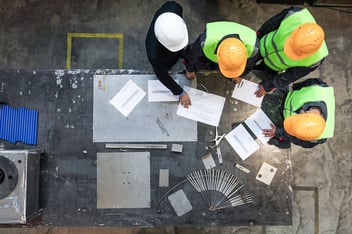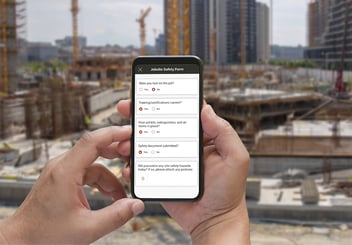Increasing material costs, supply chain issues, manufacturing delays, and labour shortages are just some of the problems faced by contractors in the post pandemic world today. However, one cost in particular has been getting very little attention as of late; insurance.
Some of you may have noticed that your annual insurance rates have been increasing year over year over the last decade. As of late, these price increases have been happening more rapidly and I believe there is a very significant chance that this is due to a lack of skilled workers throughout the industry.
You might be wondering - How can a lack of skilled workers drive the cost of insurance to rise? Before we dive into that, it’s first beneficial to understand the types of insurance often found in construction.

No two contractors operate in the same way, therefore a contractor's insurance coverage is often as unique as their business. It is essential to know the basics of what is required to mitigate the operational risks of your business, both now and in the future. The list below quickly outlines some of the most common types of insurance policies that you should be aware of to ensure you have the best protection.
Common Types of Insurance for Contractors
The list below typically applies to most contractors who need the bare essentials when it comes to insurance. For larger contractors or projects, there may be additional requirements such as bonding, environmental, and professional liability insurance, that are unique to their project requirements.
1. General Liability Insurance
This is one of the most important and common insurances. It covers claims that arise as a result of damage a contractor causes a third party during the course of construction. Before you start work on any project, make sure you have this in place!
2. Completed Operation Insurance
This type may not be included in general liability insurance. The main difference is that completed operation insurance covers the liability of your work after the project is complete, whereas general liability insurance covers your project during ongoing construction. This is very important for specific contractors such as electrical, where there is a risk of fire post construction.
3. Equipment Coverage
This type of insurance protects your equipment from natural events and theft. The range of equipment it covers can be anything from hand tools to heavy machinery.
4. Workers Compensation Coverage
This insurance covers your company's employees in the event they are injured while performing their jobs. This may be the most expensive part about insuring your business so it is worth shopping around and finding a carrier that has the ability to mitigate these costs for you.

This only applies to larger contractors who have a warehouse or a lot to store heavy machinery. As the name suggests, it covers damages related to your property and the structures on it. If you lease or work from a home office, this insurance is not required.
6. Commercial Auto Insurance
This coverage is for contractors who have work vehicles for their business operations. This covers not only the vehicle but bodily harm as well as the result of an accident.
Now that you have an idea of the different types of insurance for construction, it will be easier to see how poor workmanship can impact the number of claims for some of the above policies.
The Trickle Down Effect of the Skilled Labour Shortage

Skilled workers are hard to find. According to Buildforce Canada, they estimate that there are about 257,000 workers retiring by the end of 2029. This, combined with the fact that the volume of construction activity is constantly on the rise, means that Canada needs to hire more than 300,000 workers by 2029 to compensate for the retiring workforce.
So how does this impact insurance rates? A lack of skilled workers means construction projects are likely starting to suffer from a lack of quality and craftsmanship. This alone is one of the leading causes of insurance claims in Canada, with water damage being a close second. According to Darren Tasker, the head of energy and construction for Allianz Global Corporate & Speciality, claims related to faulty workmanship and design defects are ranked number 1 in terms of frequency of occurrence, and lately they are becoming even more frequent.
This lack of skilled labour means contractors are forced to send their 3rd, 4th, or worst skilled team to work on technical projects. They simply can’t keep up with filling their organizational gaps, especially during the pandemic, so their quality of work is starting to suffer. As a result, there are now more claims happening due to faulty workmanship, which is likely due to unskilled or inexperienced workers making more and more mistakes.
What Can Contractors Do to Mitigate This?

Insurance is an essential mitigation tool in the construction industry. First things first, make sure you are properly covered in terms of insurance and your day to day operations. It is essential to assess your current insurance package to make sure it covers all aspects of your business. Make sure to shop around for the best rates and packages, and ask your fellow industry members who they would recommend.
If finding skilled labour is a serious problem for you, you might want to consider bringing in foreign contractors. This can be a risky venture, but something to consider as there are quite a few foreign firms who have extensive experience working in Canada. This may help mitigate the risk of deficiencies and provide a more secure foundation for your company to work with.
Lastly, investing in the time and care to improve employee retention rates might be worthwhile as the struggle to find skilled replacements continues. Happy employees tend to not look elsewhere for work. Take the time to listen to their ambitions and concerns to help generate a structure that works for everyone.
Stay tuned next week for an article that dives deeper into the types of insurance for all sized contractors and the role each can play in your business.
If you enjoyed this article, join our mailing list now to receive all the latest articles and stay up-to-date on what Ontraccr is developing to bring automation to the construction industry!






